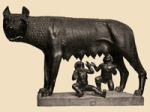In the previous post we have shown two little Japanese girls capable of perfectly playing some music of the classical period.
Which surprised me in many respects and made me reflect.
Germany, Vienna and Italy
First of all by ‘classical style’ we mean the music created from the mid 1700’s until the first decades of 1800 thanks to contributions from Germany (Southern Germany – Mannheim etc. – but not only), Vienna and Italy, which changed the spirit & the technique of music into something inspired by the ideals of ancient classical art.
In other posts we’d mused about this magical region where many centuries earlier Roma and Germania met (and clashed,) ie the Roman provinces (Germania Superior, Raetia, Noricum and Pannonia) along the axis of what was once the limes germanicus or frontier of the ancient Roman Empire (look at this map!) that separated the world of Rome from the un-romanized Germanic (and non Germanic) tribes (read more: 1, 2, 3.)
It may be a simplification (and an obsession,) but that ‘classical music’ in its narrow sense (in the broad sense it refers to all Western art music since its beginnings) was much later to be born in such cultural crossroads – well, it didn’t happen in our opinion by mere chance.
[Roman & non Roman. Where are hence the traces of this duality in today’s societies? – we had asked ourselves]
Now this ‘classical music’, that followed Baroque and developed before the spread of Romanticism, is characterized by formal balance, a certain restraint and a terse simplicity attained with extreme economy of means together with a very refined taste: which makes the performance of such art daunting despite its apparent easiness. Its model is in fact that of Hellenic art, although adapted to modern times (and to modern music, since we know so little of ancient music.)
This may be a reason why playing Mozart, Haydn or Boccherini and Clementi ‘well’, that is, with the necessary purity, is often more difficult than rendering subsequent and technically harder pieces of the Romantic and contemporary repertoire. I saw pianists who could easily play Brahms and Scriabin but sweated their way through the end of a Mozart adagio.
The Japanese and the Russians
Now, that these Japanese children, coming from a different planet, are able to do this extremely well – isn’t it amazing?
Classical balance and taste is nothing one can improvise. One needs to have breathed such air.
Take the Russians, such formidable musicians. Not completely European ok but closer to us than the Japanese for sure, they have traditionally always hesitated before the classical repertoire (and when they didn’t … the result was often not among the best.)
So, the Russians fail where the Japanese don’t – there must be something in those Eastern cultures I am not aware of.
Some readers have got any ideas?
ψ
In the meanwhile, as an Italian, I know the Japanese – a few I’ve met who study bel canto in Rome – love Italian opera quite a lot whose style always resisted the complexity of the romantic and late-romantic German harmonies and voicing (Verdi Bellini and Donizetti etc. on one hand, Wagner or Richard Strauss on the other hand: two different universes altogether! Roman & non Roman?)
Once more. What these oriental people may find in the Western ‘classical’ style of music?
Mario: “By the way, I heard that classical music makes hogs as fat as whales.”
MoR: “What?? Are you kidding me?”
Mario: “It is true! This Vietnamese pig farmer, Nguyen Chi Cong, found a new way to make his 3,000 hogs eat more quickly and happily by having them listen daily to the music of Beethoven, Mozart and Schubert. It seems the soothing effect is also working for other domestic animals!”
MoR: *Rolling eyes*
ψ
Related posts:
Roman Limes. Between Two Worlds
Arturo Benedetti Michelangeli’s Chilly Genius
From the two Sides of the Roman Limes
See also the series dedicated to the notions of ‘classic’ & ‘classical’ (1, 2 and 3)




























